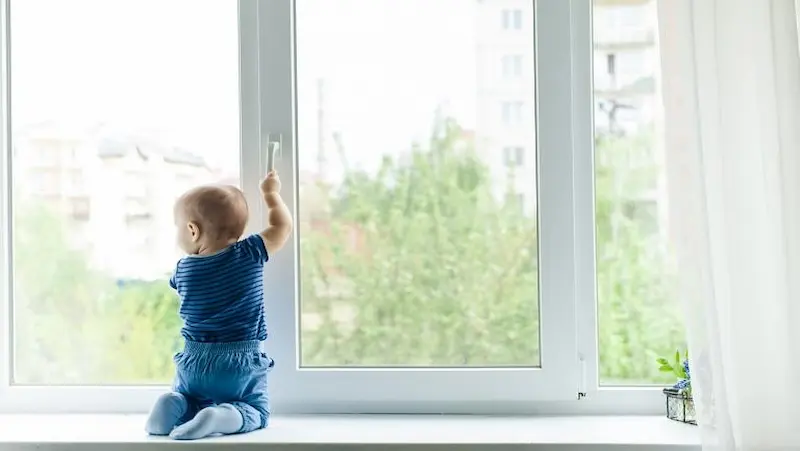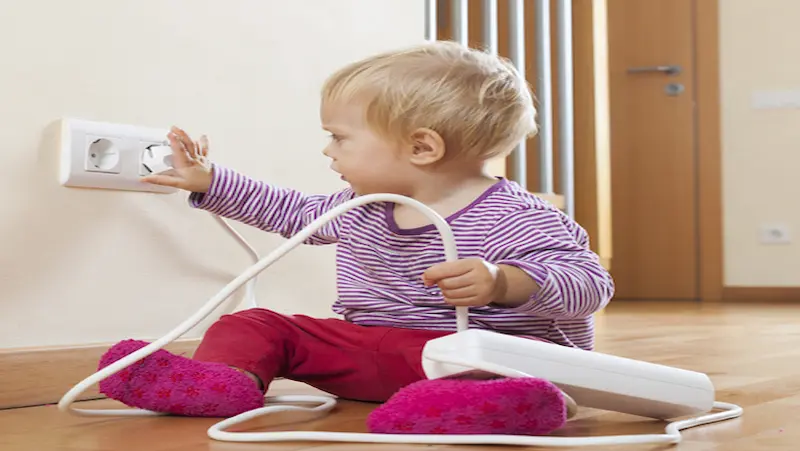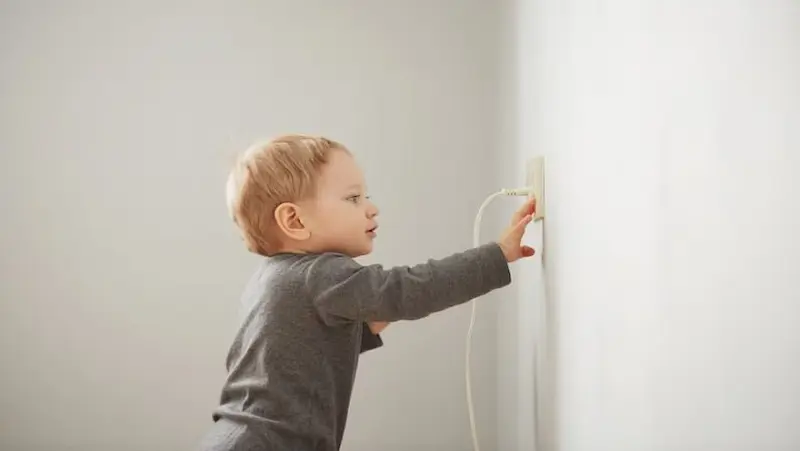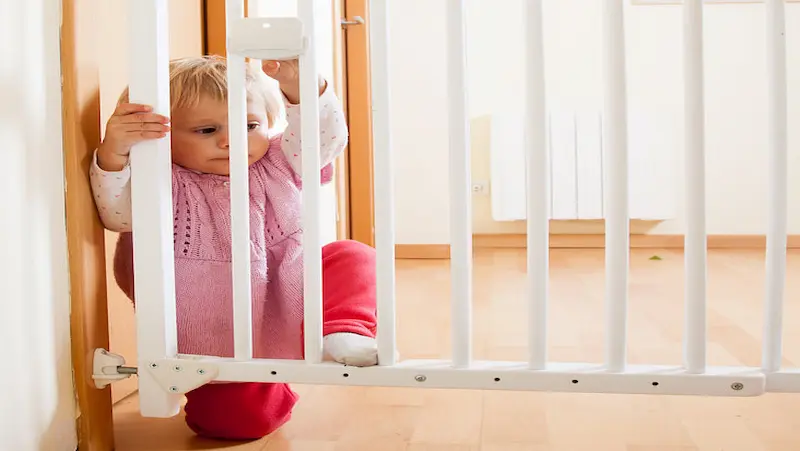Bringing a new member into the family is an exciting and cherished moment. As caregivers, our top priority is to ensure the safety and well-being of our little ones. With their natural curiosity and increasing mobility, it becomes essential to create a secure environment for them to explore and grow. This is where babyproofing products play a crucial role. From safety gates to corner protectors, these products are specifically designed to make our homes safer for our babies.
In this ultimate guide to babyproofing products, we will delve into a variety of essential tools and solutions that can help protect our little adventurers from potential hazards. Whether you’re a new parent, a relative, or a caregiver, this guide aims to equip you with the knowledge and resources needed to create a safe haven for your precious bundle of joy. So, let’s embark on this journey together and discover the world of babyproofing products that can provide peace of mind for both you and your baby.
Table of contents
- Babyproofing Basics
- Understanding the developmental stages of babies
- Identifying Potential Hazards and Ensuring Child Safety
- Essential Baby Proofing Products: Creating a Safe Haven for Your Little Explorer
- Childproofing the Nursery: Creating a Safe and Serene Space for Your Little One
- Kitchen and Dining Area Safety: Nurturing a Safe Culinary Environment for Your Little Chef
- Living Room and Play Area Safety: Creating a Safe Haven for Exploration and Play
- Bathroom Safety: Ensuring a Secure and Enjoyable Bathing Experience
- Conclusion
- FREQUENTLY ASKED QUESTIONS(FAQ)
Babyproofing Basics

Babyproofing Basics are the foundation for creating a safe and secure environment for your little one. It involves identifying and addressing potential hazards in your home to minimize the risk of accidents and injuries. Conducting a thorough assessment of your living space is the first step, where you can identify areas such as sharp corners, electrical outlets, stairs, and cabinets that need attention. Once potential hazards are identified, essential babyproofing products come into play.
These products, such as safety gates, cabinet locks, outlet covers, and corner guards, are specifically designed to prevent access to dangerous areas or objects. Choosing the right babyproofing products and installing them correctly is crucial to ensure their effectiveness. By implementing these basic babyproofing measures, you can provide a safer environment for your baby to explore, play, and grow with peace of mind. Remember, babyproofing is an ongoing process, and as your child grows and develops new skills, it is important to reassess and update your safety measures accordingly.
Understanding the developmental stages of babies
Understanding the developmental stages of babies is key to providing appropriate care and creating a safe environment that meets their evolving needs. From the newborn stage to toddlerhood, babies go through significant physical, cognitive, and motor skill development. During the newborn stage, the focus is on providing a safe sleep environment, proper handling techniques, and securing furniture and appliances.
As babies start to crawl and explore, safety concerns shift to securing cabinets, drawers, and electrical outlets, as well as cushioning sharp edges and corners. When they begin walking and climbing, stair safety, installing safety gates, and securing windows become crucial. Alongside physical milestones, cognitive and language development also come into play. Supervising and providing age-appropriate toys and activities that stimulate their growing minds while ensuring safety are vital.
By understanding these developmental stages, parents and caregivers can anticipate their baby’s abilities, adapt their surroundings accordingly, and implement effective safety measures at each stage. This understanding enables a nurturing environment where babies can explore, learn, and thrive with minimized risks.
Identifying Potential Hazards and Ensuring Child Safety
Identifying potential hazards at home is a critical step in creating a safe environment for your little one. By recognizing and addressing these hazards, you can significantly reduce the risk of accidents and ensure the well-being of your child. Here are some general tips to help you create a safe environment:
1. Conduct a thorough walkthrough: Take a systematic approach by going through each room in your home and carefully examining it from a child’s perspective. Get down on your hands and knees to get a closer look at potential hazards that may be within reach.
2. Pay attention to sharp edges and corners: Identify furniture, tables, and countertops with sharp edges that could pose a risk to your child. Consider using corner protectors or edge guards to cushion these areas.
3. Secure furniture and large appliances: Heavy furniture, such as bookshelves and TVs, should be securely anchored to the wall to prevent tipping accidents. Use safety straps or brackets to secure them in place. Ensure that large
appliances, like ovens and refrigerators, are also properly secured.
Robotics courses for kids provide a hands-on learning experience, allowing young minds to explore the fascinating realm of technology and engineering while having fun.
Essential Baby Proofing Products: Creating a Safe Haven for Your Little Explorer

When it comes to babyproofing your home, there are a few essential products that every parent should consider. These products are designed to create a safe environment for your little one to explore and play without the risk of accidents or
injuries. Let’s take a closer look at three must-have baby-proofing products:
1. Safety Gates: Safety gates are a game-changer when it comes to keeping your child out of potentially dangerous areas. Whether it’s blocking off staircases or restricting access to certain rooms, safety gates provide peace of mind and ensure your little explorer stays in safe zones. Consider factors such as gate type (pressure-mounted or hardware-mounted), ease of installation, and durability when choosing the right safety gate for your home.
2. Outlet Covers and Cord Management Solutions: Electrical outlets are a magnet for curious little fingers, making outlet covers a necessity. These covers prevent accidental shocks and keep your child away from potentially hazardous electrical connections. Additionally, cord management solutions are essential for organizing and securing cords, preventing your child from pulling on them or tripping over them.
3. Corner Guards and Edge Protectors: Sharp edges and corners can pose a significant risk to your child, especially during those early stages of crawling and exploring. Corner guards and edge protectors are simple yet effective solutions to safeguard your child from bumps and bruises.
Childproofing the Nursery: Creating a Safe and Serene Space for Your Little One
1. Crib Safety Guidelines and Recommended Accessories: A cozy crib is the centerpiece of your baby’s nursery, and ensuring its safety is paramount. Follow crib safety guidelines, such as maintaining the proper spacing between slats, ensuring a snug mattress fit, and adjusting the side rail height as your baby grows.
2. Baby Monitors and Camera Systems: Keeping a watchful eye on your baby while they sleep is made easier with the right baby monitor or camera system. Choose from audio or video options that suit your preferences and provide peace of mind.
3. Furniture Anchors and Tip-Over Prevention: Nursery furniture, such as dressers and bookshelves, can pose a tipping hazard. Safeguard your child by using furniture anchors to prevent accidents. Safe Bedding Options and Crib Mattress Guidelines: Create a comfortable and safe sleeping environment for your baby by adhering to safe bedding practices.
Kitchen and Dining Area Safety: Nurturing a Safe Culinary Environment for Your Little Chef

1. Stove and Oven Safety Devices: Keep your child safe from burns and accidents by implementing stove and oven safety devices. Explore options such as stove knob covers, stove guards, and oven locks to prevent curious hands from accessing hot surfaces and turning on the burners or oven.
2. Refrigerator and Appliance Locks: Secure your refrigerator and other kitchen appliances with locks to prevent your child from accessing potentially harmful items or getting trapped inside.
3. High Chairs and Booster Seats: Choose the right high chair or booster seat that meets safety standards and provides proper support for your child during mealtime. Look for features like sturdy construction, safety harnesses, and easy-to-clean materials to ensure a safe and comfortable dining experience.
Living Room and Play Area Safety: Creating a Safe Haven for Exploration and Play
1. Securing Heavy Furniture and TVs: Protect your child from furniture tipping accidents by securely anchoring heavy furniture and TVs to the wall using furniture anchors and TV straps.
2. Baby Gates for Staircases and Open Areas: Install sturdy baby gates to restrict access to staircases and other potentially hazardous areas, ensuring your child’s safety while they explore and play.
Bathroom Safety: Ensuring a Secure and Enjoyable Bathing Experience

1. Bathtub and Shower Safety Measures: Implement bathtub and shower safety measures such as non-slip mats, faucet covers, and temperature regulators to prevent slips, burns, and scalds.
2. Toilet Locks and Safety Accessories: Install toilet locks to prevent accidental drowning and keep curious hands out of harm’s way. Consider adding safety accessories like toilet seat locks and lid locks for added protection.
3. Non-Slip Mats and Bath Thermometers: Place non-slip mats inside the bathtub and use bath thermometers to maintain a safe water temperature for your child’s bath time.
Conclusion
In conclusion, creating a safe environment for your little one through babyproofing is crucial. By identifying potential hazards, utilizing essential babyproofing products, and implementing safety measures, you can minimize the risk of accidents and ensure your child’s well-being. Babyproofing is not just about installing products; it is a proactive approach to keeping your child safe. By creating a safe environment, you allow your child to explore, play, and grow with confidence.
Kids coding languages introduce young learners to the world of programming through beginner-friendly and engaging platforms.
Prioritize babyproofing in your home and invest in the necessary steps to ensure your child’s safety. The effort and investment will provide priceless peace of mind, knowing that your little one is protected. Take action today and create a safe and secure haven where your child can thrive. Embrace the joy and discovery of their early years, knowing that you have done everything possible to keep them safe.
Also, BrightChamps provides a comprehensive platform for learning about money for kids, offering interactive and engaging resources that teach financial literacy, budgeting, saving, and other essential money management skills.
FREQUENTLY ASKED QUESTIONS(FAQ)
A1: Babyproofing refers to the process of making your home safe for infants and toddlers by identifying and addressing potential hazards. It involves taking preventive measures to minimize the risk of accidents and injuries to babies who are starting to explore their environment. Babyproofing is crucial because it helps create a safe space where children can move around and explore without encountering dangerous objects or situations.
A2: It’s recommended to start babyproofing your home before your child becomes mobile. Babies can begin crawling or scooting as early as six months, so it’s best to start the process beforehand. This way, you can ensure that the necessary safety measures are in place before your little one starts exploring their surroundings.
A3: Some essential babyproofing products include:
Outlet covers or plug protectors to prevent access to electrical outlets.
Safety gates to block off stairs and restrict access to certain areas.
Cabinet and drawer locks to prevent access to hazardous substances or sharp objects.
Corner guards to cushion sharp edges on furniture.
Door stoppers or finger pinch guards to prevent pinched fingers.
Toilet locks to prevent drowning hazards.
Window guards or window stops to prevent falls.
Furniture straps to secure heavy furniture to the wall.
These are just a few examples, and the specific products you need may vary depending on your home and your child’s needs.
A4: To assess potential hazards in your home, you can:
Get down on your hands and knees to view the environment from your child’s perspective.
Look for sharp edges, corners, or objects that could be choking hazards.
Identify any unstable furniture or appliances that could topple over.
Check for exposed electrical outlets, cords, or wires.
Evaluate the accessibility of cleaning products, medications, or other hazardous substances.
Examine windows, stairs, and doors for potential safety concerns.
By taking a thorough look around your home and considering potential risks, you can better understand what areas require babyproofing.
A5: Babyproofing products, when used correctly and according to the manufacturer’s instructions, are generally safe for children. However, it’s important to choose products from reputable brands and ensure they meet safety standards. Read product reviews, check for safety certifications, and follow installation instructions carefully. Additionally, regularly inspect and maintain babyproofing products to ensure they remain in good condition.
A6: Installing babyproofing products correctly is essential for their effectiveness. Follow the provided instructions for each specific product carefully. Take measurements, use appropriate tools, and make sure the product is securely installed. If you’re uncertain about installation, consult the manufacturer’s website or contact customer support for guidance.
A7: The best babyproofing products can vary depending on the area of the home. Here are some recommendations:
Kitchen: Cabinet and drawer locks, stove knob covers, oven door locks, and appliance latches.
Bathroom: Toilet locks, faucet covers, and non-slip mats or decals in the bathtub.
Stairs: Safety gates at the top and bottom of stairs, and banister guards if needed.
Remember to assess each area for potential hazards and choose products accordingly.
A8: Some budget-friendly babyproofing products include:
Outlet plug covers.
Cabinet and drawer latches.
Corner guards.
Door stoppers or finger pinch guards.
Safety gates (pressure-mounted gates tend to be more affordable than hardware-mounted ones).
These products are relatively inexpensive but still provide essential safety measures.
A9: Yes, there are alternative or DIY babyproofing solutions you can consider. For example:
Use pool noodles or pipe insulation to cushion sharp edges or corners.
Secure cords or blinds out of reach with cord winders or hooks.
Use hair ties or rubber bands to keep cabinets closed.
While DIY solutions can be cost-effective, make sure they are safe, reliable, and do not pose additional hazards. Always prioritize the safety of your child and consult expert advice when necessary.
A10: You should regularly reassess your babyproofing measures as your child grows and becomes more capable of overcoming safety barriers. As they develop new skills and reach different milestones, they may require different safety measures. Check and update babyproofing products periodically, especially when your child starts climbing, walking, or showing increased curiosity. Stay vigilant and adapt your babyproofing strategies accordingly.









